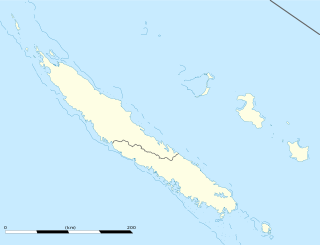In linguistics and grammar, a pronoun is a word or a group of words that one may substitute for a noun or noun phrase.
French grammar is the set of rules by which the French language creates statements, questions and commands. In many respects, it is quite similar to that of the other Romance languages.
This article discusses the forms and functions of the personal pronouns in Catalan grammar.
The Portuguese personal pronouns and possessives display a higher degree of inflection than other parts of speech. Personal pronouns have distinct forms according to whether they stand for a subject (nominative), a direct object (accusative), an indirect object (dative), or a reflexive object. Several pronouns further have special forms used after prepositions.

Spanish is a grammatically inflected language, which means that many words are modified ("marked") in small ways, usually at the end, according to their changing functions. Verbs are marked for tense, aspect, mood, person, and number. Nouns follow a two-gender system and are marked for number. Personal pronouns are inflected for person, number, gender, and a very reduced case system; the Spanish pronominal system represents a simplification of the ancestral Latin system.
A disjunctive pronoun is a stressed form of a personal pronoun reserved for use in isolation or in certain syntactic contexts.
Italian grammar is the body of rules describing the properties of the Italian language. Italian words can be divided into the following lexical categories: articles, nouns, adjectives, pronouns, verbs, adverbs, prepositions, conjunctions, and interjections.

The English personal pronouns are a subset of English pronouns taking various forms according to number, person, case and grammatical gender. Modern English has very little inflection of nouns or adjectives, to the point where some authors describe it as an analytic language, but the Modern English system of personal pronouns has preserved some of the inflectional complexity of Old English and Middle English.
In linguistics, clitic doubling, or pronominal reduplication is a phenomenon by which clitic pronouns appear in verb phrases together with the full noun phrases that they refer to.
In French grammar, verbs are a part of speech. Each verb lexeme has a collection of finite and non-finite forms in its conjugation scheme.
In French, pronouns are inflected to indicate their role in the sentence, as well as to reflect the person, gender, and number of their referents.

The passé composé is a past tense in the modern French language. It is used to express an action that has been finished completely or incompletely at the time of speech, or at some time in the past. It originally corresponded in function to the English present perfect, but now there is a tendency to use it for all completed actions in the past as the equivalent of the simple past. Its current usage corresponds fairly closely to that of the Latin perfect tense. It is formed using an auxiliary verb and the past participle of a verb.
Romanian nouns, under the rules of Romanian grammar, are declined, varying by gender, number, and case.
In French, elision is the suppression of a final unstressed vowel immediately before another word beginning with a vowel or a silent ⟨h⟩. The term also refers to the orthographic convention by which the deletion of a vowel is reflected in writing, and indicated with an apostrophe.
There are increasing differences between the syntax used in spoken Quebec French and the syntax of other regional dialects of French. In French-speaking Canada, however, the characteristic differences of Quebec French syntax are not considered standard despite their high-frequency in everyday, relaxed speech.
A prepositional pronoun is a special form of a personal pronoun that is used as the object of a preposition.
Bulgarian pronouns change according to gender, number, definiteness and case. Pronouns are classified as: personal, possessive, interrogative, demonstrative, reflexive, universal, negative, indefinite and relative.

Tayo, also known as "patois de Saint-Louis", is a French-based Creole spoken in New Caledonia. It is spoken by about 3000 people in the village of Saint-Louis, about 15 km (9.3 mi) from the New Caledonian capital Nouméa. The language developed out of the contact of speakers of many different Kanak languages in the mission, and the use of French for official purposes and as the language of prestige. The language contains structural elements primarily from Melanesian languages and lexical elements mainly from French.

Spanish personal pronouns have distinct forms according to whether they stand for the subject (nominative) or object, and third-person pronouns make an additional distinction for direct object (accusative) or indirect object (dative), and for reflexivity as well. Several pronouns also have special forms used after prepositions.

Spanish object pronouns are Spanish personal pronouns that take the function of the object in the sentence. Object pronouns may be both clitic and non-clitic, with non-clitic forms carrying greater emphasis. When used as clitics, object pronouns are generally proclitic, i.e. they appear before the verb of which they are the object; enclitic pronouns appear with positive imperatives, infinitives, and gerunds. Non-clitic forms, by contrast, can appear anywhere in the sentence but can only rarely be used without their clitic counterparts. When used together, clitic pronouns cluster in specific orders based primarily on person, and clitic doubling is often found as well. In many dialects in Central Spain, including that of Madrid, there exists the phenomenon of leísmo, which is using the indirect object pronoun le as the direct object pronoun where most other dialects would use lo (masculine) or la (feminine).




